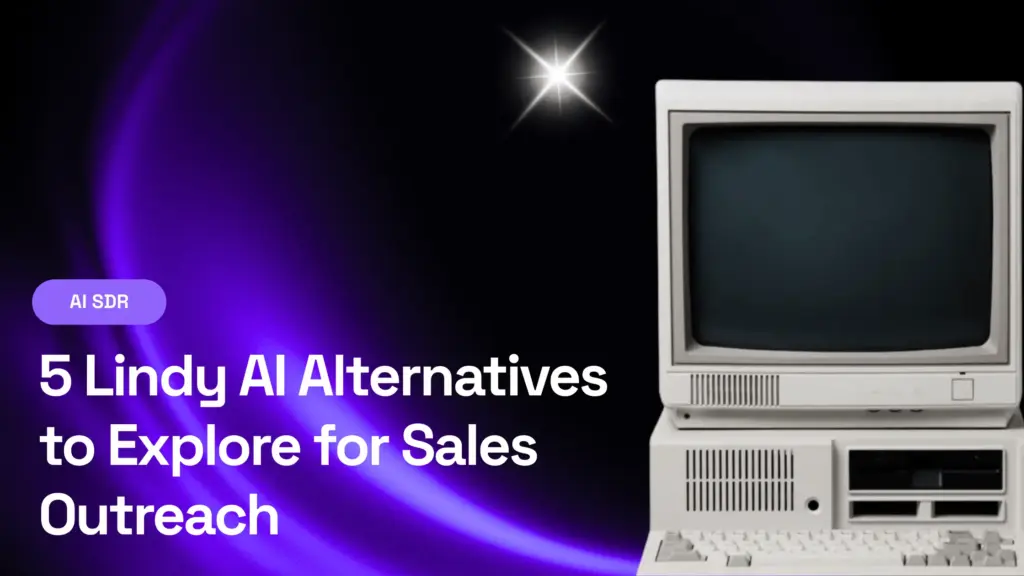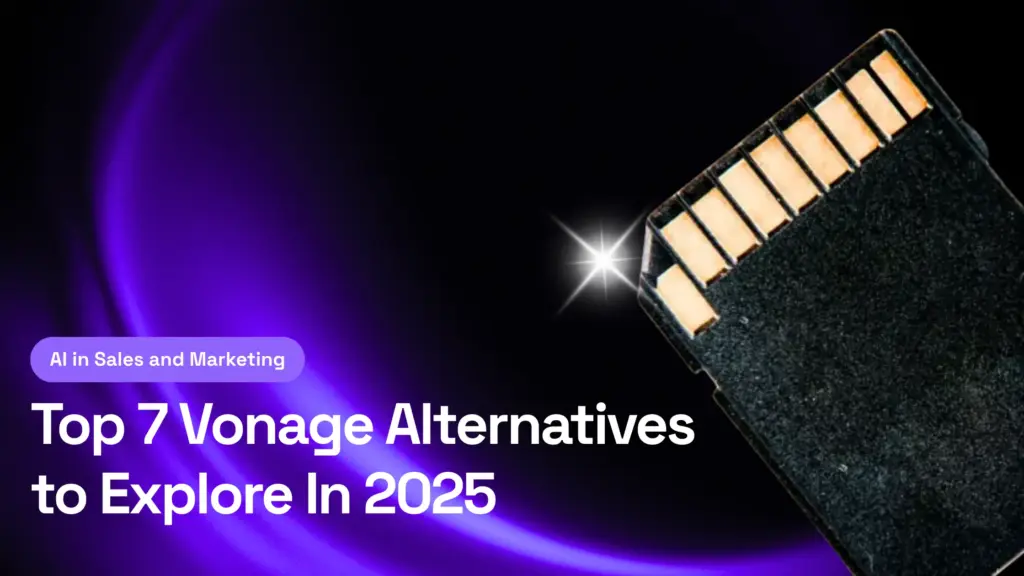Manual lead generation is becoming unsustainable in the B2B landscape. Continuous usage of this often develops inconsistent results, along with the countless hours of time consuming tasks that can waste valuable resources.
Hence, the development of lead generation automation is a crucial implementation that can drive B2B growth. AI-powered platforms, such as Anybiz.io, can help supply high-quality leads and assist the sales team achieve a faster, scalable and more efficient sales process.
But what exactly is lead generation automation, and what does it do to drive B2B growth? Let’s explore it further.
Understand the Concept of Lead Generation Automation
Lead generation automation uses sophisticated software and AI-driven tools that can handle repetitive and tedious tasks. Traditional leads generations are performed by human Sales Development Representatives (SDR), which often involves:
- Prospect Research
- Initial Outreach
- Follow-up Communications
- Lead Qualifications
Lead generation automation enhances these by handling time-consuming tasks while allowing sales teams to focus on high-value activities.
Common Challenges in Manual Lead Generation
- Time Consumption
The manual lead generation process consumes an extraordinary amount of time. Sales teams typically spend 2-3 hours daily on prospect research alone, followed by 1-2 hours crafting personalized emails, and an additional 2 hours managing follow-ups.
Administrative tasks add another hour to the daily workflow, resulting in a significant portion of the workday spent on repetitive tasks rather than building meaningful relationships with potential clients.
- Inconsistent Results
Manual lead generation inherently suffers from inconsistency issues that can significantly impact business outcomes. Human fatigue naturally affects the quality of work throughout the day, while varying skill levels among team members lead to inconsistent prospect engagement.
Furthermore, the limited capacity of manual processes creates a ceiling effect on scaling operations, restricting growth potential.
- Human Error
The human element in manual lead generation, while valuable for relationship building, introduces various types of errors that can impact sales success.
Some issues usually involve errors in data entry, overlooking follow-ups that can be a potential lead, incomplete information gathering of prospects, and overall inconsistency in lead scoring.
These errors often have severe repercussions that can result in missed opportunities and decreased conversion rates.
- Resource Limitations
Manual lead generation faces significant resource constraints that limit its effectiveness. Teams struggle with geographic and time zone barriers, making it challenging to engage with global prospects effectively.
The standard eight-hour workday creates natural limitations on outreach capacity, while high turnover rates in SDR positions lead to constant training and onboarding cycles. These limitations collectively restrict a company’s ability to scale its lead generation efforts efficiently.
Essential Components of Lead Generation Automation
An effective lead generation automation is composed of essential elements that work seamlessly together that transforms how businesses acquire and nurture leads.
Data Collection and Management
The foundation of effective lead generation automation lies in data collection and management. Modern automation systems leverage multiple data sources to build comprehensive prospect profiles. This includes data such as company size, industry, and revenue, technographic data encompassing technology stack and digital footprint, and behavioral data tracking website interactions and content engagement.
Prospect Identification
Modern prospect identification goes beyond basic demographic matching. Advanced automation systems employ sophisticated algorithms to identify ideal customer profiles (ICPs) and buying signals. This process involves two key components: intent data analysis and predictive analytics.
Predictive analytics leverages historical data and AI to score leads based on likelihood to convert, identify companies in active buying cycles, predict optimal engagement timing, and determine the best communication channels for each prospect.
Multi-Channel Outreach
Effective lead generation automation requires orchestrated engagement across multiple channels. This integrated approach ensures consistent messaging while maximizing reach and effectiveness. The primary channels include email automation, social media integration, and website personalization.
Website personalization implements dynamic content adaptation, sophisticated visitor tracking and identification, personalized call-to-actions, and in-depth behavioral analytics to enhance user experience and conversion rates.
Lead Scoring and Qualification
Automated lead scoring represents a crucial evolution from traditional manual qualification methods. Modern systems employ machine learning algorithms to evaluate engagement patterns, assess firmographic fit, monitor digital body language, and calculate probability of conversion.
The qualification process incorporates both explicit and implicit criteria. Explicit criteria include budget authority, decision-making capacity, technical requirements, and timeline indicators. Implicit signals encompass content interaction patterns, website behavior, email engagement, and social media activity.
To maximize the effectiveness of these components, they must work in concert, creating a seamless flow from initial contact to qualified lead. This integration ensures that data flows smoothly between systems, engagement is consistently tracked and measured, lead scoring reflects real-time behavior, and qualification criteria evolve based on performance data.
Building Your Lead Generation Automation Strategy
Having established the essential components of lead generation automation, developing a comprehensive strategy becomes crucial for successful implementation. This section will guide you through the strategic planning process that ensures your automation efforts align with your business objectives and target audience needs.
Setting Clear Objectives
The foundation of any successful automation strategy begins with establishing clear, measurable objectives. Organizations that define their automation goals effectively see greater efficiency and higher returns compared to those without structured plans.
Your automation objectives should address both quantitative and qualitative aspects of lead generation. Consider metrics such as lead volume, quality scores, conversion rates, and sales cycle duration. A comprehensive objective framework should include:
- Impact of automated lead generation on your revenue
- Objectives and Goals for reducing manual tasks
- Determine its scalability and how it can help, or affect, your business growth
Identifying Target Audience
A precise understanding of your target audience is fundamental to automation success. This goes beyond basic demographic data to include detailed buyer personas and account profiles. Your audience analysis should encompass:
- Market Segmentation: For a more targeted and automated outreach.
- Decision-Maker Mapping: Understand the roles of key stakeholders within your targeted organization and identify key stakeholders.
- Behavioral Analysis: Understand how your target engages with your content, purchasing behavior, and how they research solutions.
Creating Content and Messages
Content strategy in automated lead generation must balance personalization with scalability. Your content framework should include:
- Value Proposition Messaging: Develop clear, compelling messages that resonate with each segment of your target audience. These messages should address specific pain points and demonstrate clear value.
- Content Sequencing: Create logical progression in your automated content delivery, moving prospects through awareness, consideration, and decision stages.
- Personalization Parameters: Define which elements of your content will be personalized through automation and establish rules for dynamic content insertion.
Establishing KPIs
Key Performance Indicators (KPIs) provide the metrics needed to measure success and optimize your automation strategy. According to HubSpot’s research, companies that regularly track KPIs are twice as likely to achieve their revenue goals. Essential KPIs to monitor include:
Lead Generation Metrics:
- Lead Volume and Quality Scores
- Channel-Specific Conversion Rates
- Cost per Qualified Lead
- Lead Velocity Rate
Engagement Metrics:
- Email Open and Response Rates
- Social Media Engagement Levels
- Website Interaction Patterns
- Content Consumption Metrics
ROI Metrics:
- Customer Acquisition Cost
- Lifetime Value Ratios
- Revenue Attribution
- Pipeline Velocity
How AnyBiz is Revolutionizing Lead Generation Automation

As businesses embrace automation, the challenge lies in selecting the right platform that seamlessly integrates prospecting, outreach, and lead management. AnyBiz provides a fully automated, AI-driven solution that replaces traditional SDR functions, helping businesses engage high-quality leads with minimal effort. By leveraging advanced AI and machine learning, AnyBiz ensures that lead generation is not only efficient but also scalable.
AI Sales Agents & 24/7 Lead Engagement
Traditional sales teams are limited by working hours, but AnyBiz operates around the clock. AI sales agents continuously analyze prospect behavior, determining the best times, messaging styles, and communication channels to maximize engagement. The platform also automates responses and follow-ups, ensuring that no lead is left unattended.

This always-on functionality allows businesses to maintain consistent engagement across different time zones without expanding their sales teams. Whether responding to inquiries, nurturing leads, or booking meetings, AnyBiz handles the heavy lifting, allowing sales teams to focus on closing deals.
Personalized Multi-Channel Outreach
Reaching prospects through a single channel is no longer enough. AnyBiz leverages a database of over 400 million prospects. Our AI SDRs will contact them across multiple channels, such as email, LinkedIn, and AI phone calls, ensuring maximum interaction. The platform customizes outreach sequences based on prospect behavior, using intent-based targeting to determine the best approach for each individual.
Seamless CRM Integration & Lead Management
AnyBiz integrates with leading CRM platforms like HubSpot, ensuring that prospect interactions and engagement history are logged in real-time. Sales teams can track progress without manually updating records, streamlining lead management.
The platform also simplifies scheduling with a Calendly integration, allowing prospects to book meetings instantly. By reducing administrative work and ensuring a structured lead pipeline, AnyBiz helps businesses maintain momentum in their sales processes.
Sales Pipeline View
AnyBiz’s Pipeline View provides a structured, real-time overview of sales opportunities, automatically organizing prospects based on engagement status to ensure no lead is overlooked. By eliminating manual tracking, it helps sales teams focus on high-priority deals and accelerate conversions.
Why AnyBiz is the Future of Lead Generation
AnyBiz is transforming B2B lead generation by making automation smarter, more efficient, and highly scalable. Businesses looking to streamline their outreach, improve lead quality, and reduce manual workloads can benefit from AI-driven automation.
Automating lead generation is no longer a luxury—it is a necessity for businesses looking to scale efficiently. Traditional, manual prospecting methods are time-consuming, inconsistent, and difficult to scale, making it harder for sales teams to focus on closing deals. By leveraging AI-driven automation, businesses can streamline their outreach, engage high-quality prospects, and convert more leads with minimal manual effort.
If your business is ready to scale its lead generation efforts without increasing headcount, now is the time to embrace automation.
Start your 7-day free trial at AnyBiz today and experience how AI-powered automation can drive growth, improve lead quality, and free up your team for high-value sales activities.



